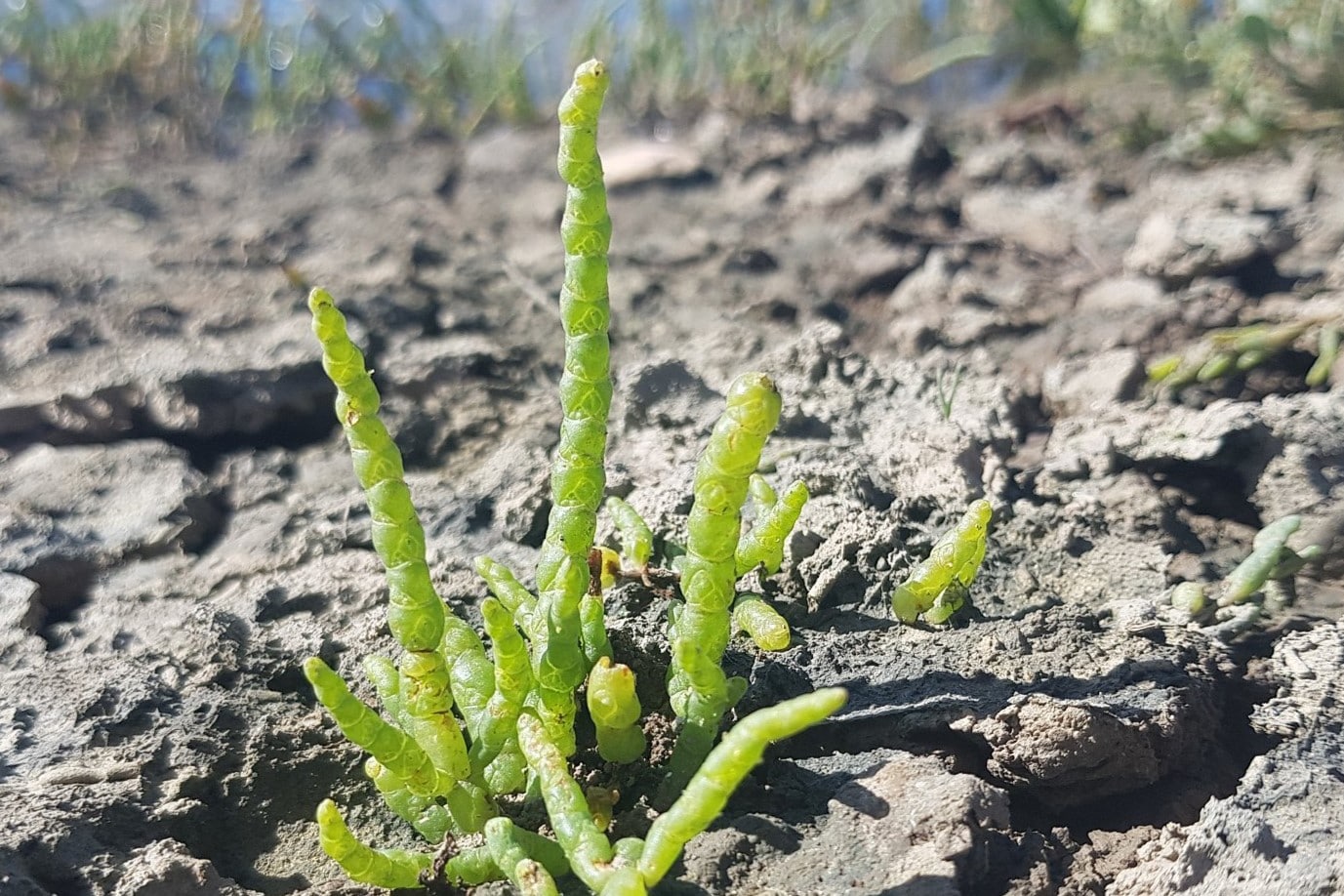
Marsh Samphire, also known as glasswort, is a unique plant that thrives in salty environments like coastal marshes and mudflats. Ever wondered what makes this succulent so special? Marsh Samphire is not only a culinary delight but also a nutritional powerhouse. Packed with vitamins A, C, and D, it offers a healthy boost to your diet. Its crunchy texture and salty flavor make it a favorite in gourmet dishes. But there's more to this plant than meets the eye. Did you know it has been used in glassmaking and soap production? Marsh Samphire is a versatile plant with a rich history and numerous benefits. Ready to learn more? Let's dive into 15 fascinating facts about this incredible plant!
Key Takeaways:
- Marsh Samphire, also known as glasswort, is a salty, crunchy delicacy packed with nutrients. It's perfect for salads, seafood dishes, and pickles, and offers antioxidant and anti-inflammatory properties.
- This unique plant thrives in salty coastal environments and is a valuable indicator of coastal ecosystem health. It's a versatile ingredient in gourmet cuisine and offers numerous health benefits.
What is Marsh Samphire?
Marsh Samphire, also known as glasswort, is a succulent plant found in coastal regions. It thrives in salty environments, making it a unique addition to various dishes. Let's dive into some fascinating facts about this intriguing plant.
-
Edible Delicacy: Marsh Samphire is a popular ingredient in gourmet cuisine. Its salty, crunchy texture makes it a perfect addition to salads, seafood dishes, and even pickles.
-
Nutrient-Rich: This plant is packed with vitamins and minerals. It contains high levels of vitamin C, magnesium, and calcium, making it a nutritious choice for health-conscious eaters.
-
Historical Uses: Historically, Marsh Samphire was used to make soda ash, an essential component in glassmaking. This is why it’s sometimes called glasswort.
Where Does Marsh Samphire Grow?
Marsh Samphire thrives in specific environments, often found in coastal areas. Its ability to grow in salty conditions sets it apart from many other plants.
-
Coastal Habitats: It typically grows in salt marshes, estuaries, and along the coastlines of Europe, North America, and South Africa.
-
Salt Tolerance: Marsh Samphire can survive in high-salinity environments where most plants would perish. This makes it a fascinating subject for botanical studies.
-
Seasonal Growth: The plant is usually harvested in the summer months, from June to September, when it’s at its peak freshness.
How to Use Marsh Samphire in Cooking?
Incorporating Marsh Samphire into your meals can add a unique flavor and texture. Here are some ways to use it in your kitchen.
-
Blanched and Sautéed: Blanching and sautéing Marsh Samphire with garlic and olive oil is a simple yet delicious way to enjoy it.
-
Raw in Salads: Its crunchy texture makes it a great addition to fresh salads. Just rinse it thoroughly to remove any excess salt.
-
Pickled: Pickling Marsh Samphire can extend its shelf life and add a tangy twist to your dishes.
Health Benefits of Marsh Samphire
Beyond its culinary uses, Marsh Samphire offers several health benefits due to its rich nutrient profile.
-
Antioxidant Properties: The plant is rich in antioxidants, which help protect your cells from damage caused by free radicals.
-
Anti-Inflammatory: Some studies suggest that Marsh Samphire has anti-inflammatory properties, which can help reduce inflammation in the body.
-
Digestive Health: Its high fiber content aids in digestion and helps maintain a healthy gut.
Interesting Facts About Marsh Samphire
There are many lesser-known facts about Marsh Samphire that make it even more interesting.
-
Botanical Family: Marsh Samphire belongs to the Amaranthaceae family, which includes other salt-tolerant plants like quinoa and spinach.
-
Cultural Significance: In some cultures, Marsh Samphire is considered a delicacy and is often featured in traditional dishes.
-
Environmental Indicator: The presence of Marsh Samphire can indicate the health of coastal ecosystems. Its growth patterns can provide valuable information about environmental changes.
Marsh Samphire: Nature's Salty Gem
Marsh Samphire, with its unique flavor and nutritional benefits, stands out as a fascinating plant. Its ability to thrive in salty environments makes it a resilient and valuable addition to various dishes. Packed with vitamins and minerals, it supports a healthy diet while adding a distinctive taste to meals. Whether enjoyed raw, cooked, or pickled, Marsh Samphire offers versatility in the kitchen. Its history of use in traditional medicine and culinary practices highlights its longstanding importance. Next time you're at the market or near a coastal area, consider giving Marsh Samphire a try. Its crisp texture and salty tang might just become your new favorite ingredient. Embrace the natural goodness of Marsh Samphire and explore the many ways it can enhance your culinary creations.
Frequently Asked Questions
Was this page helpful?
Our commitment to delivering trustworthy and engaging content is at the heart of what we do. Each fact on our site is contributed by real users like you, bringing a wealth of diverse insights and information. To ensure the highest standards of accuracy and reliability, our dedicated editors meticulously review each submission. This process guarantees that the facts we share are not only fascinating but also credible. Trust in our commitment to quality and authenticity as you explore and learn with us.


